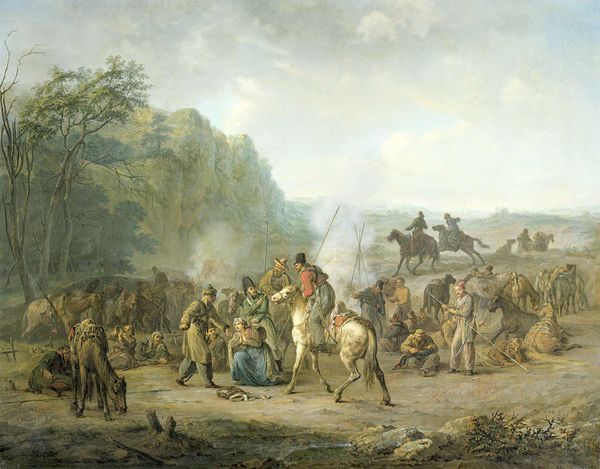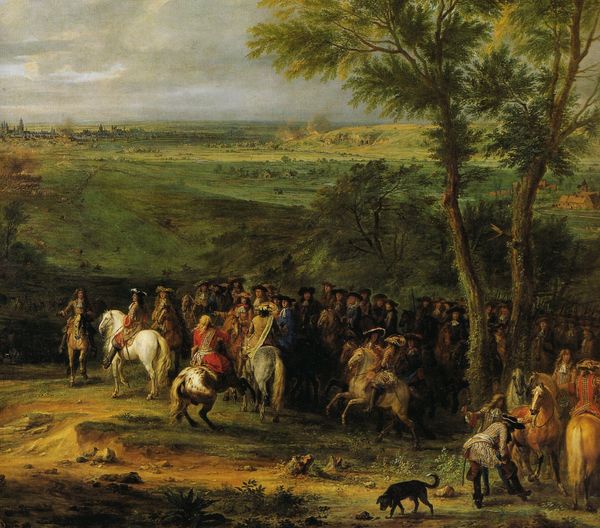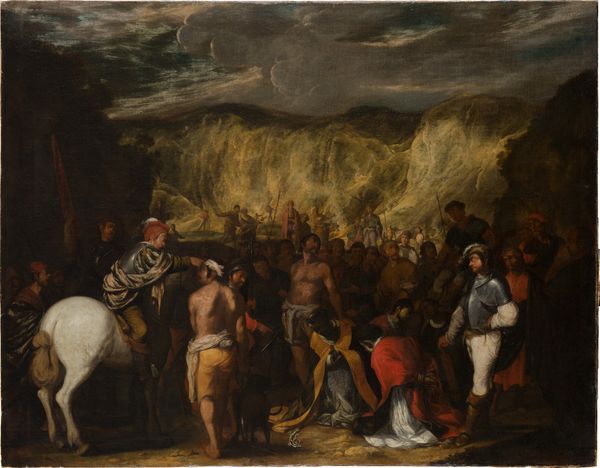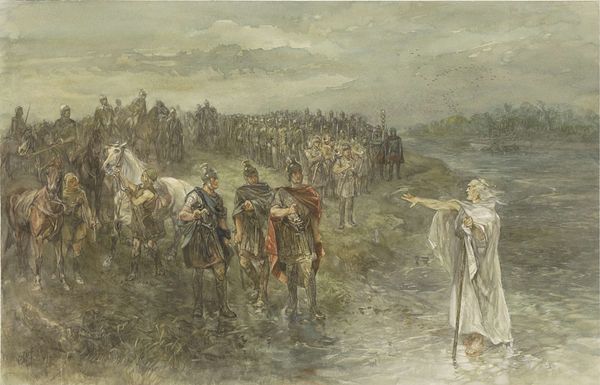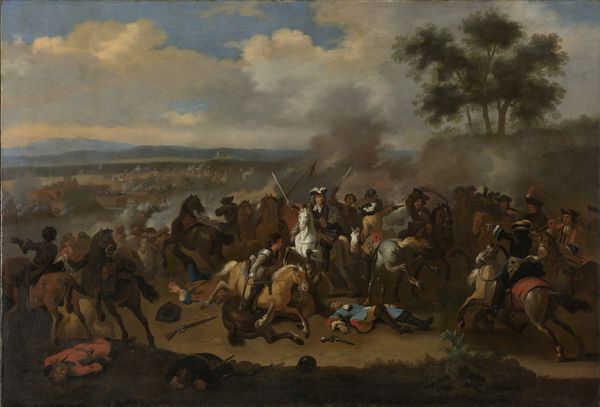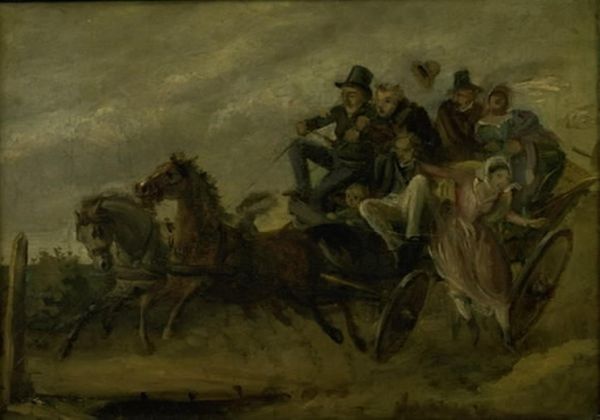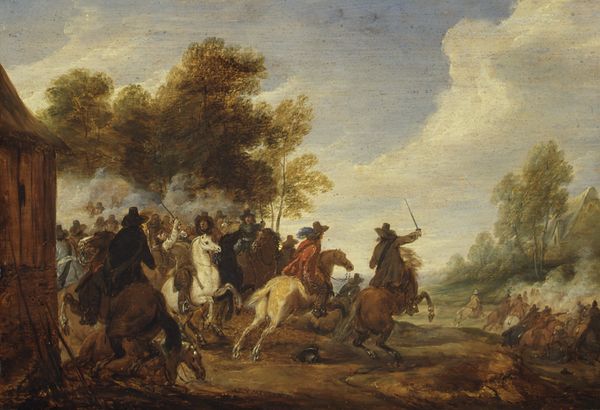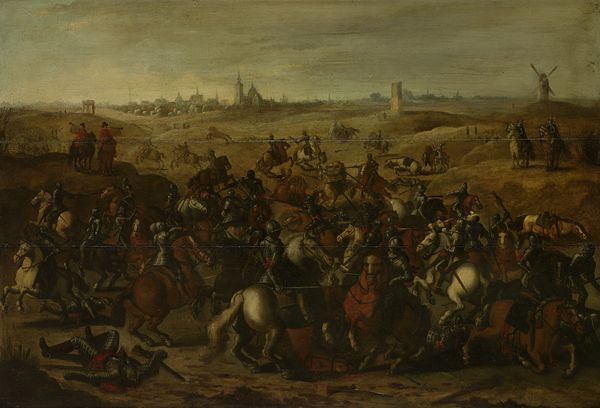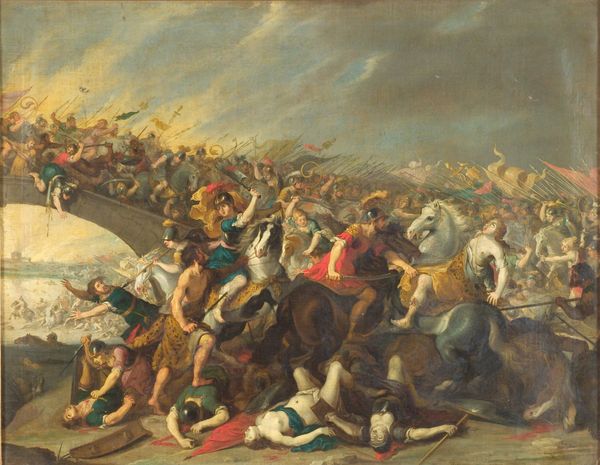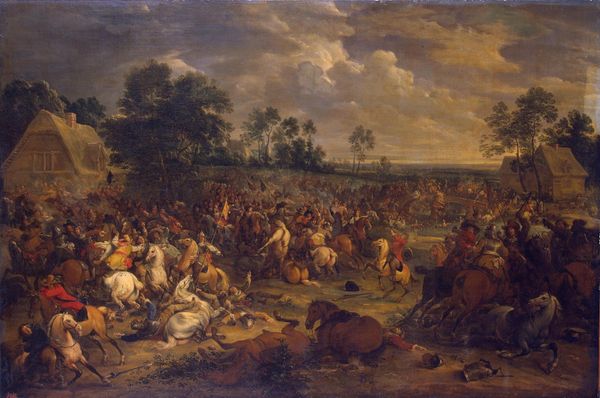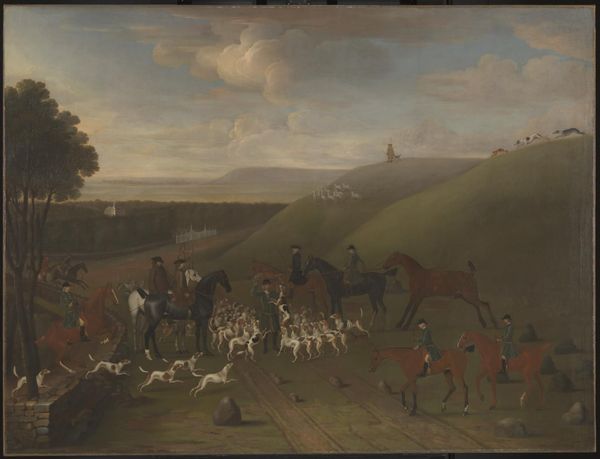
Inspection of a Cavalry Regiment, perhaps by William of Hesse-Homburg 1742
0:00
0:00
painting, oil-paint
#
baroque
#
painting
#
oil-paint
#
landscape
#
oil painting
#
genre-painting
#
history-painting
Dimensions: height 47.5 cm, width 66 cm
Copyright: Rijks Museum: Open Domain
Editor: We’re looking at “Inspection of a Cavalry Regiment, perhaps by William of Hesse-Homburg,” an oil painting from 1742. It's grand in scale, but the muted colors give it a somber, almost melancholy feel, despite the military subject. What kind of story do you think this painting tells? Curator: Well, it’s fascinating how Troost captures not just the visual spectacle of military power, but also the socio-political currents swirling around such displays. What was the purpose of these inspections, beyond mere military assessment? Think about the audience, the intended message. Editor: It seems like a way to project power and instill order, visually. But who *was* the audience? Curator: Exactly. Paintings like this, displayed in specific settings, were crucial in shaping public perception of authority. Consider the political climate of the time – who was vying for power? Where would a painting like this typically be displayed, and who would see it? Think about the power dynamics between the officers and the ordinary soldiers, subtly revealed in the composition. Editor: I see what you mean. It's not just a straightforward depiction of military strength. The positioning, who gets the light, the space...it's all sending a message. It's not just documentation but really crafting a specific image of power. Curator: Precisely. How the artist chooses to portray it, the emphasis on certain figures over others. These paintings offer us insights into the power structures and political agendas of the time. It reflects more than just a historical moment, it justifies it, perpetuates it. Editor: I never thought about genre painting as political commentary, or a means of projecting ideology. It’s certainly given me a new perspective. Curator: It's a good reminder to always look beyond the surface. Consider who commissioned the work, and how they expected the audience to respond. It makes art history so much more exciting.
Comments
No comments
Be the first to comment and join the conversation on the ultimate creative platform.
